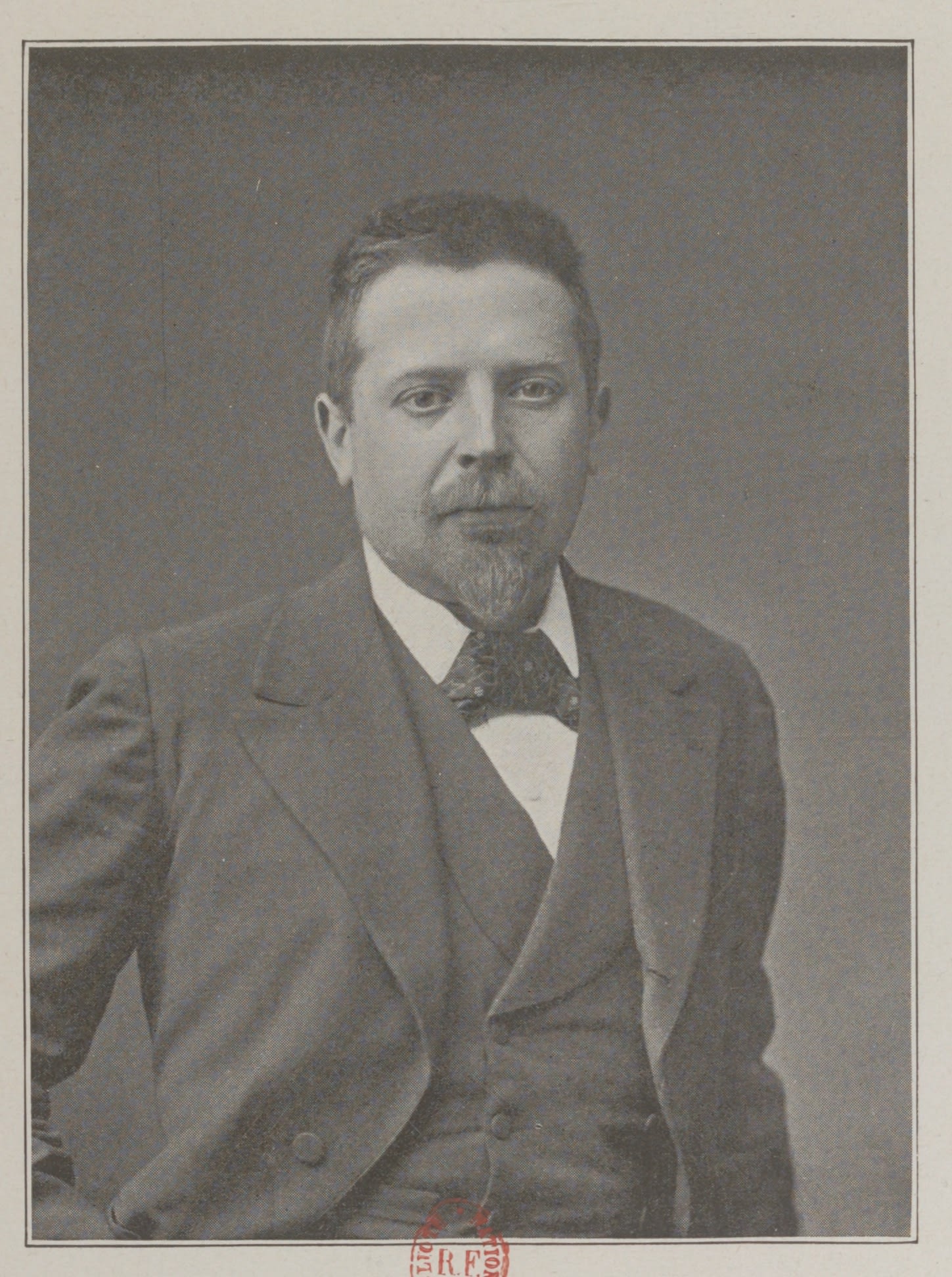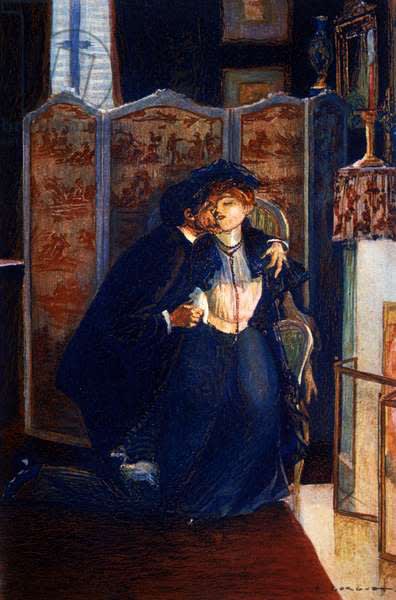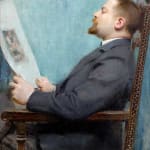Auguste-François Gorguet (1862 - 1927)
Portrait of the artist Leon Ruffe, scrutinising an engraving
Dedicated, signed and dated at lower edge: A MON AMI LEON RUFFE . AUG . FRANCOIS GORGUET / MDCCCLXXXXII
Portrait of the artist Leon Ruffe, scrutinising an engraving
Dedicated, signed and dated at lower edge: A MON AMI LEON RUFFE . AUG . FRANCOIS GORGUET / MDCCCLXXXXII
Oil on panel
23.8 x 16.4 cm. (9 x 6 ½ in.)
Provenance:
Leon Ruffe (1864 – 1935), and thence by descent to the nephew of the artist.
Exhibited:
Société des Artistes Français, Exposition Universelle, Antwerp, 1894, no. 1156.
Auguste-François Gorguet depicts his friend, the artist Léon Ruffe, deep in concentration, as he scrutinises an engraving, possibly one of his own. Completely absorbed, he leans back into a high-backed chair with inlay, looking down in rapt concentration. Ruffe’s strong profile stands out in stark contrast against the monochromatic backdrop composed of an unusual turquoise hue. A photograph of Ruffe from 1900, eight years after he was portrayed by Gorguet shows the same closely cropped hair and goatee.

Fig. 1, Photograph of Léon Ruffe, 1900
Though utterly forgotten today, Ruffe had quite a successful career, winning medals at the Exposition Universelle of 1900, as well as being named an officer of the Legion of Honour and appointed as inspector des Beaux-Arts. Active as a painter, engraver and illustrator, he worked in a typical, though multifaced, Belle Époque style.

Fig. 2, Auguste-François Gorguet, Illustration for Anatole
France’s Lys Rouge
His friend and portraitist Gorguet has been equally neglected. Like Ruffe, Gorguet worked as a painter and illustrator, achieving early success with his book and magazine illustrations (fig. 2), as well as poster designs for plays and operas which capture the spirit of the fin-de-siècle. Studying at the École de Beaux-Arts under Gustave Boulanger, Jean-Léon Gérôme, Aimé Morot and Léon Bonnat, Gorguet’s artistic output is hugely diverse, though often unified by an eye for quirky detail. Amongst his best works are his intimate, small-scale portraits of friends in informal settings, of which the present work is lovely example. Gorguet exhibited with success, receiving numerous prizes and awards, including a travel grant that allowed him to visit and study in Italy, Spain and North Africa in 1894, the year this idiosyncratic and charming portrait was exhibited in Antwerp at the Exposition Universelle.



